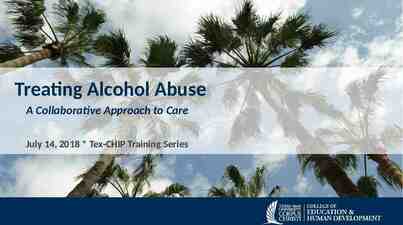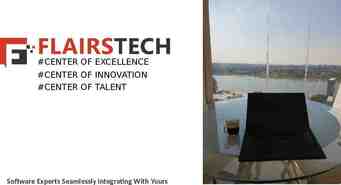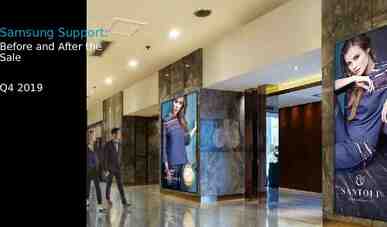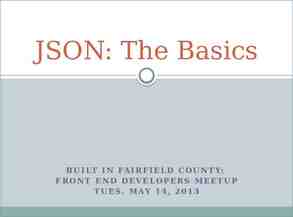E-learning for Education Multimedia University MULTIMEDIA UNIVERSITY
34 Slides778.50 KB

E-learning for Education Multimedia University MULTIMEDIA UNIVERSITY

What is E-learning? The use of Internet technologies to deliver a broad array of solutions that enhance knowledge and performance E-learning is Internet-enabled learning http:// www.cisco.com Rosenberg, 2001 MULTIMEDIA UNIVERSITY

Truth of e-learning Internet has started reshaping education. Education will not be the same in the next decade There is no going back. The traditional classroom has to be transformed Web-based Education Commission, US Many universities/colleges may not survive by the end of this decade MULTIMEDIA UNIVERSITY

e-business in e-learning E-learning market will swell from US 2.2 billion to US 11.4 billion by 2003 Cushing Anderson of Framingham, IDC Only about 1% of the population have taken an on-line course E-learning is still new MULTIMEDIA UNIVERSITY

E-learning is going to be big Education and training forms one of the largest sectors of the economy in most countries 40% of Fortune 500 companies have established corporate universities Moe and Blodgett, op. cit., endnote 21, p. 230. Over the last decade, the number of corporate universities grew from 400 to 1,800 Meister, Jeanne op. cit., endnote 23 Skilled jobs now represent 85% of all jobs in US, in contrast to 20% in 1950. http://www.webcommission.org/directory MULTIMEDIA UNIVERSITY

Education Market will be big A big growth is expected in the education market Student population in US colleges increase from 232,000 at the turn of the century to 13 million today The US Army has established a online educational portal and hope to enroll 15,000 to 20,000 of its army personnel for a degree programme In Malaysia, with one university in 1957 to over 21 public and private university The future soldiers will not be carry guns but computers MULTIMEDIA UNIVERSITY

Internet Users will continue to grow Table: Internet Users in Asia (2000) Country Hong Kong Number of Users 3,460,000 Internet % population Indonesia 400,000 0.18% China 17,000,000 1.3% India 4,500,000 0.45% Japan 38,000,000 30% Malaysia 1,500,000 7% Philippines 500,000 0.6% Singapore 1,850,000 44% South Korea 16,000,000 34% Taiwan 6,400,000 29% Thailand 1,000,000 1.6% Vietnam 100,000 0.13% 48% Source: http://www.nua.ie MULTIMEDIA UNIVERSITY

Evolution of Education Technology IMPACT TIME Internet: Greatest impact TIME MULTIMEDIA UNIVERSITY

E-learning: Blended mode Chalk-and-board has long ruled the classrooms will not be eliminated Less emphasis Interactive Digital Content: more emphasis on demand learning interactive MULTIMEDIA UNIVERSITY

National ICT Agenda PEOPLE - Work Culture - ICT Skills - Knowledge worker - Learning Society - United, moral & ethical INFRASTRUCTURE - Communication - Fibre-Optic Cabling - Gigabit ATM - Satellite - Transport/Logistic - etc KNOWLEDGE-BASED ECONOMY APPLICATION & CONTENT - Smart Schools - e-govt. - Smartcard - Tele-medicine - Others MULTIMEDIA UNIVERSITY

NATION’s ICT EDUCATION VISION ECONOMY Competitive Knowledge Economy I PET M CO Knowledge Products & Services KN G LED W O E IE SOC SOC E TIV Y IET TY ICT based Economy N TIO A M OR F N I S 2005 I ET OC Y 2010 TIME 2020 MULTIMEDIA UNIVERSITY

sh or t Res Sp er po e Ap time n sive ed p t Go li cat o ac to ch od ion hie I nf o v an g rm of te e wo e, a tio c r n S hnol ld-cl o yst a ss e m gy, , , et c MMU Objectives & s s se n te our atio va c or s, tc, ri en ab ie e P driv Coll ustr ing, t h, nd nd i e k e rc ar a ith Sp M e es w ent R d ru P MMU tu ed ng- and S es & i d Lea Staff aciliti c t t F Bes Good ices, e v Ser ity search, , l a Qu ge Re dents u MULTIMEDIA UNIVERSITY

Framework of MMU STAFF DATABASE STUDENT DATABASE LIBRARY DATABASE OTHERS CONTENT E-PROCUREMENT CLIENT/SERVER RADIO MMU DOC. MGT. IVR NEMS SMS WAP WIRELESS DEVICES DIGITAL LIB. MMLS SMARTCARD ICEMS INTERNET ADMIN. ONLINE APP. LECTURERS PAPERLESS STUDENTS OTHER DATABASE INFRASTRUCTURE (622Mbps ATM, Gigabit Ethernet, Wireless Access Points, Satellite, etc) MULTIMEDIA UNIVERSITY

MMU: Preparing students for lifelong learning GLOBALISATION Satellite-based Education LEARNING ORGANISATION KNOWLEDGE ECONOMY E-Learning LEARNING SOCIETY LEARNING COMMUNITIES IMPACT OF ICT KNOWLEDGER WORKER Industrial Training LEARNING FAMILIES LEARNING INDIVIDUAL COMPETITION Classroom Lectures MULTIMEDIA UNIVERSITY

Learning models will need to change INDUSTRIAL AGE LEARNING MODEL DIGITAL AGE LEARNING MODEL How do people learn in a digital environment? Is e-learning effective? Are learners ready? New learning model are needed MULTIMEDIA UNIVERSITY

Traditional & E-learning Approach Traditional and E-learning approaches Traditional Classroom E-Learning Classroom Physical – limited size Synchronous Unlimited Anytime, anywhere Content PowerPoint/transparency/etc Textbooks/library Video Collaboration Multimedia / simulation Digital library On demand Syn & Asyn. Communication Personalisation One learning path Learning path and pace determined by learner MULTIMEDIA UNIVERSITY

Growing student population Delivery Mode 100 : 0 (F/T) 80 : 20 (F/T) 20 : 80 (DE) CLIC K BRICK Delivery mode will change More virtual universities Increase in tuition fee Cost effective solutions (e.g. e-learning) Lack of facilities and funding Privatisation of education MULTIMEDIA UNIVERSITY

Teaching aids will change Blackboard OHP TV/VHS LCD PC Whiteboard MULTIMEDIA UNIVERSITY

E-learning In an on-line multimedia learning environment: – teaching & learning is ‘one-to-one’ (individual) – more interactivity (in normal classroom, it varies with the class size) – learner-centred – Learner monitoring & grading system MULTIMEDIA UNIVERSITY

Benefits Convenient – – – – – self-service (mix and match) on-demand (anytime, anywhere) private learning self-paced Flexibility: (modular package) MULTIMEDIA UNIVERSITY

Benefits Cost-effective – – – – Virtual learning environment Share lessons among schools Reduce material cost Reduce travel/accommodation costs MULTIMEDIA UNIVERSITY

Benefits Consistent – – – Central control of content Same quality of content for all Same quality of education for all MULTIMEDIA UNIVERSITY

Benefits media-rich – Easier to understand & more engaging repeatable – As many times as you like easier to monitor progress – less administrative work – can be more precise MULTIMEDIA UNIVERSITY

Teacher’s Obligation use all available technology incorporate ‘old’ & ‘new’ Teacher’s Obligation Encourage collaborative learning Lay foundation for Lifelong learning MULTIMEDIA UNIVERSITY

Building an e-learning culture Teacher: Develop knowledge & skills Understand learning and its need Facilitate learning Create learning opportunities Learner: Self-directed Self-motivated Self-regulating Lifelong learning Building an E-learning Culture Administrator: Create Learning environment Provide ICT infrastructure Resources for lifelong learning MULTIMEDIA UNIVERSITY

E-learning tools: E-mail Every teacher should have an e-mail account Communicate with students Communicate with parents Students can submit assignment Can have attachments Create a paperless environment Simple but effective Efficient and cost effective MULTIMEDIA UNIVERSITY

E-learning tools: Chat Synchronous communication tool Communicate with students Communicate with parents More students participate Collaborative learning MULTIMEDIA UNIVERSITY

E-learning tools: Online Forum Asynchronous discussion forum Teacher can create discussion groups Teacher could post a question and request students to comment Students can post their comments Can encourage community participation Collaborative learning can be fostered Feedback from diverse culture MULTIMEDIA UNIVERSITY

E-learning Tools: Web Wide range of materials available Teacher will need to narrow down It is a resource centre Sharing of resources Supported by images, audio, simulation and multimedia MULTIMEDIA UNIVERSITY

E-learning tools: Video Conference Can conduct a live lecture Communication with students Communication with parents Support by audio, chat and whiteboard Support sharing of applications Can be recorded and later be used for on demand lectures Demo MULTIMEDIA UNIVERSITY

Tools: Learning Management System (LMS) Management of content Tracking students Administrative features Integration with various tools such as chat, forum, e-mail, etc. Reporting Demo. of Multimedia Learning System (MMLS) MULTIMEDIA UNIVERSITY

Where to start? Traditional – – – – Beginning – – – – – – Pen and paper Personal presentation MS Word Use Kid pictures Use MS Publisher Use MS Powerpoint Use creative writing Regularly access the Internet Students can navigate your Network Students frequently use a Digital Camera Evolving – – – – I.C.T. is formally taught to every student Students manage the school Internet Students and teachers use a wide range of CD ROM Student can craft web pages MULTIMEDIA UNIVERSITY

Where to start? Consolidating – – – Advanced – – – – – – School website is current and reflects school culture School website has educational value for students and the wider community Students can use multi media Teacher use the Intranet to display and initiate learning Teachers can design web pages Students submit learning using floppy, Network, Print format Use selected software to source knowledge Use the Internet to compliment learning outcomes Use of personal web pages to link to a variety of program e-learning / digital classroom – – – – – Teacher use the Intranet to initiate and measure learning E Mail is a focal educational exchange medium Students are able to manage and produce digitally edited movies Multimedia visual literacy is a valued learning focus Teachers can comfortably use digital multimedia to enhance learning MULTIMEDIA UNIVERSITY

Conclusion ICT and e-learning offers opportunity to raise educational standards in schools Large range of ICT tools are available for teaching and learning Closes the gap of “Digital Divide” Involvement of teachers and parents is important Schools will need funding, access and training MULTIMEDIA UNIVERSITY






